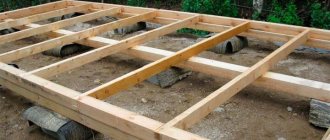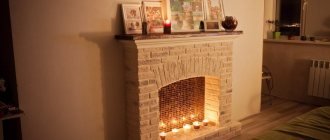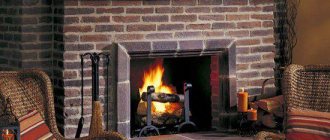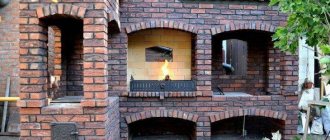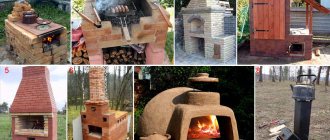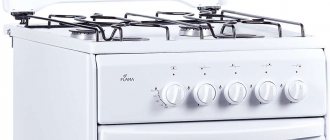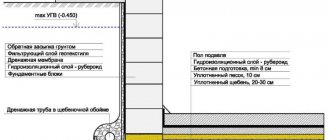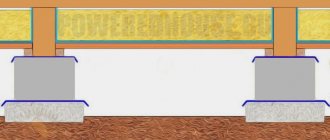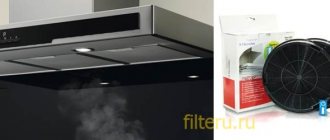July 20, 2020
Author of the article Fidrea Maria
Many people still do not know that in addition to “alcohol” biofireplaces, there are also gel fireplaces. What is a gel biofireplace and how does it work? Let's find out!
A classic biofireplace does not require a chimney and runs on environmentally friendly fuel made by fermenting beets, grapes, corn or other agricultural crops. Bioethanol is poured into the fuel block and set on fire. When burning, heat is released and no harmful substances are released - only water and carbon dioxide.
Follow us on social networks!
Do-it-yourself production of biofireplaces
In most cases, people decide to make a biofireplace with their own hands, having familiarized themselves with the models presented in the store and their prices. Having studied how a bio-fireplace works, you can immediately understand that there is nothing complicated in this system.
The device always consists of four basic blocks:
- frame for fastening elements;
- protective screen made of fire-resistant glass;
- fuel tank for bioethanol;
- burners.
If desired, a portal is mounted around the system, which allows you to fully integrate a biological fireplace into the interior, as usually happens with the classic version.
But despite all the simplicity, the cost of such devices is quite high, which is why in most cases it is more profitable to assemble a biofireplace with your own hands. In addition, a device you make yourself will become not only an excellent piece of furniture, but also your pride. You don’t have to make any extra efforts for this; simple skills in handling tools are enough, and all materials for a bio-fireplace can be easily purchased in suitable stores.
Hanging version of eco-fireplace
To assemble a biofireplace with your own hands, you need to prepare the following materials:
- To make a protective screen you will need glass. It is best to choose the hardened version, but in most cases the regular one will do just fine. The thickness should be chosen from 4-5 mm, this will be enough. You can buy a large piece and cut it yourself, but it is better to contact a glass shop, tell them the dimensions, and ask them to polish the edges. In this form, the glass for the bio-fireplace will look much prettier. In addition, in the workshop you can consult on methods for attaching the protective screen, because you can install it without gluing, or you can connect all the glass with sealant. The experts will tell you which heat-resistant sealant to choose.
- Metal containers and cans are usually chosen for the burner and fuel tank. In some cases, the fuel tank, frame and burner are a single unit, but it is best to provide an additional iron container that you will install inside the frame. The fuel block can be considered the main element of the system. Fuel should not leak out; the tightness must be at a high level. You can make a fuel tank for a biofireplace with your own hands by cutting out a metal tank and welding it together.
- To create a distributed fire that will occupy the space allotted to it, you will need a metal stack. The mesh is installed on the fuel tank. It is desirable that the cells in the grid be small; in extreme cases, you can fold the grid several times.
- The fire is brought to the grid using a wick, which can be an ordinary durable fabric cord. The wick for a bio-fireplace connects the fuel tank to the mesh, bringing the fire out.
- To decorate a biofireplace you will need appropriate elements. You can use stones, pebbles, ceramic imitation coals, firewood, and so on. Decorative elements are loaded inside the biofireplace, directly onto the mesh.
For the system to fully operate, biological fuel is required. You can buy it in the relevant stores. Of course, you can make biofuel yourself, but you won’t save much from it, so it’s easier and faster to use a ready-made option.
You can find everything you need for a biofireplace in stores; there are no secret elements in its design.
This is interesting: Wall-mounted fireplace (51 photos) - Electrolux model in the interior, round and flat fireplaces
Loggia or balcony
On a loggia, a biofireplace looks especially cozy if the room is insulated and intended for rest and relaxation. Even a library or office, equipped on a closed balcony, can be improved with the help of a mini-hearth.
A built-in wall or floor fireplace is usually placed near the side balcony wall.
Useful information on eco-fireplaces
The device is an enlarged version of a conventional alcohol lamp with an impressive design. There is a container for loading flammable substances, as well as a damper to regulate the intensity of the flame. To decorate an eco-fireplace, ceramic elements, metal parts and heat-resistant glass are used.
Bioethanol burns without soot and soot, so eco-fireplaces do not need chimney structures, this simplifies their operation and makes them mobile
Glass panels not only decorate such a device, but also serve to protect against heat. Not all devices have such protection, but glass screens of various modifications are sold separately.
It makes sense to purchase a protective element, especially if you plan to use a mobile model that will be installed in different places. Often such a fireplace is decorated with artificial firewood to give the structure a traditional look, but this is not the only option.
Eco-fireplaces come in floor-mounted, table-top, wall-mounted and even tabletop types, they vary in size but work the same way.
You cannot add fuel to the eco-fireplace while it is operating. If bioethanol has been spilled, the contaminated surface should be cleaned immediately
Such devices can be used to heat a room or as interior decoration. The device does not require wires, so it can be easily moved. For example, on a cool summer evening, an eco-fireplace can be installed on an open veranda. There are devices of various shapes.
An interesting option for a stylish office could be a miniature model, the chamber of which is built into the tabletop, with only the lid protruding above the surface. There are interesting options in the form of a basket, an elongated cylinder, etc.
Since an eco-fireplace in which such biofuels are burned does not need to be equipped with a combustion product removal system, the heat generated during combustion is not lost to heating additional structures.
The basic design of an eco-fireplace is almost no different from a conventional alcohol lamp, so such a device is not difficult to make with your own hands
Therefore, it is believed that the efficiency of such a device is about 95%, a fairly high figure for any system. To operate a conventional eco-fireplace for an hour, half a liter of bioethanol is usually sufficient. At the same time, 6-7 kW/h of energy can be obtained from a liter of fuel.
It is believed that a standard eco-fireplace can successfully replace an electric heater of about three kilowatts.
Wall-mounted models of eco-fireplaces can imitate traditional devices; they are varied and provide many options for the interior design of an apartment or office.
The advantage of using a biofireplace compared to other heaters is that this device slightly increases the humidity in the room. Almost any traditional heating method, on the contrary, removes moisture, which can have a negative impact on people’s health.
Both eco-fireplace and bioethanol are very easy to use, and this fuel is no more dangerous than other flammable substances used in everyday life. The combustion of bioethanol can be regulated if the design of eco-fireplaces provides for such a possibility.
The device can provide more or less heat and light, and accordingly, the time of fuel consumption will change.
This heating method also has some disadvantages. For example, despite all the ease of use, bioethanol cannot be added to the fireplace container. You need to not only wait for the composition to burn out, but also let the device cool. This point will have to be taken into account when planning the time to use the fireplace.
Although bioethanol fireplaces do not require a chimney, such devices should not be used uncontrolled.
An open flame always poses a fire hazard, so it is best to hide it behind a heat-resistant glass screen. This item can be purchased separately
A room that is heated in this way must be regularly ventilated to balance the amount of oxygen and carbon dioxide. If a little fuel is spilled while refueling the fireplace, it must be wiped up immediately, even if it is only a couple of drops of flammable substance.
To do this, it is better to keep rags with good absorbent properties on hand. For ignition, it is allowed to use special long matches, but long metal lighters are more often used. Some biofuel fireplaces are equipped with an electric ignition function, which is very convenient, but increases the cost of the model.
Photos accompanying the text to illustrate what was said
Black Vertical Wall Mounted Ethanol Fireplace
Corner models
Triangular biofireplaces
Traditional models of biofireplaces
Bio-fireplace style "high-tech"
Modern fireproof fireplace with bioethanol and Ivrea pebbles
Modern Ethanol Fireplace Control
Tabletop freestanding bioethanol fireplace made of Henry steel
Tabletop biofireplaces
Wall-mounted biofireplaces
Round and oval bio-fireplaces
Bioethanol fireplaces "Open Hearth"
Bioethanol fireplace with two rectangular sides
Bioethanol fireplace "Ghost"
Benefits of biofuels
- Renewable sources. Manure and waste are used. Above are the best mixtures for fuel production. But it is quite possible to use other waste. But they are constantly there and never end.
- Low price. Equipment costs are recouped and fuel becomes free. Of course, in its large-scale production using special equipment, electricity may be required to operate the fans, but still, the costs cannot be compared with the costs of traditional energy sources.
- Independence from supplies. If you have your own farm, then the simplest production of biofuel will not require anything additional, not even electricity. The waste is thrown into the pit and gas is produced from it.
Obviously, this type of fuel has many advantages. From use for a decorative fireplace in a city apartment, to heating houses and greenhouses on a farm. It might be worth taking a closer look at this alternative.
Design
How is the fireplace constructed? The design of the case can be almost anything, depending on personal preferences. The main requirement is compliance with safety rules, or rather the required minimum distance from the flame. The top of the flame should be at least 80 cm from the surface of the body, and the distance from the side should be at least 20-25 cm.
Composition and features of biofuel
The “bio” part of the word “biofuel” explains that only natural, renewable raw materials are used to produce this substance. Therefore, it is completely environmentally friendly and biodegradable.
The main components used to produce such fuel are grasses and grains containing large amounts of starch and sugar. Thus, corn and cane are considered the best raw materials.
You can find various brands of biofuels on sale. Preference should be given to certified products, otherwise you may face serious troublesThey produce bioethanol, or a type of alcohol. It is a colorless liquid and has no odor. If necessary, it can replace gasoline, however, the cost of such a substitute is much higher. When burned, pure bioethanol decomposes into water in the form of vapor and carbon dioxide.
In this way, it is even possible to humidify the air in the room where the bio-fireplace is installed. The substance burns with the formation of a blue “gas” flame.
This is a purely aesthetic drawback that prevents you from still enjoying the sight of an open fire. A traditional fireplace produces a yellow-orange flame, which is a kind of standard. To eliminate this drawback, additives are introduced into biofuels that change the color of the flame.
Thus, the traditional composition of a flammable liquid is as follows:
- bioethanol – about 95%;
- methyl ethyl ketone, denaturing substance – about 1%;
- distilled water - about 4%.
In addition, crystalline bitrex is added to the fuel composition. This powder has an extremely bitter taste and is intended to prevent alcohol biofuels from being consumed as alcohol. Biofuel is produced in different brands, its composition may vary somewhat, but in general does not change. It is clear that the cost of such fuel is quite high.
It is not recommended to use homemade fuel for biofireplaces, but if you still decide to try, to make it you need to use only high-purity gasoline “Galosha”
Fuel consumption depends on the number of burners and the power of the biofireplace. On average, a 2-3 hour operation of a heating unit with a power of about 4 kW per hour consumes about a liter of flammable liquid. In general, operating a biofireplace turns out to be quite expensive, so home craftsmen are trying to find a cheaper alternative to fuel. There is such an option and it is viable.
To avoid trouble, you need to purchase only high-quality components for homemade fuel. We must not forget that the bio-fireplace does not have a smoke exhaust, and all combustion products immediately enter directly into the room.
If toxic substances are present in the fuel, and this is not uncommon for low-quality alcohol-containing compounds, they will end up in the room. This threatens with the most unpleasant consequences. We recommend that you familiarize yourself with the best biofuel brands.
Therefore, it is not recommended to make fuel for a biofireplace yourself. However, if you really want to experiment, this is the safest recipe. Take pure medical alcohol. It must be purchased at a pharmacy.
To color the flame, highly purified gasoline is added to it, which is used to refill lighters (“Galoshes”).
Filling the fuel tank must be done very carefully. If liquid is spilled, you must immediately wipe it with a dry cloth, otherwise an accidental fire may occur. Liquids are measured and mixed
Alcohol should be present in a volume of 90 to 94% of the total amount of fuel, gasoline can account for 6 to 10%. The optimal proportion is determined empirically, but you should not go beyond the recommended values. Detailed instructions for the production and use of biofuel are given here
Liquids are measured and mixed. Alcohol should be present in a volume of 90 to 94% of the total amount of fuel, gasoline can account for 6 to 10%. The optimal proportion is determined empirically, but you should not go beyond the recommended values. Detailed instructions for the production and use of biofuel are given here.
It is important to remember that the resulting fuel cannot be stored, since the mixture of gasoline and alcohol will separate. It should be prepared before use and shake well for better mixing.
What to look for when choosing
Although buyers are most often guided by the appearance of the device and its compliance with the interior design, they should not lose sight of the technical characteristics of the device.
The longer the fireplace burner, the more area it can heat, and if you plan to use the device as an additional heat source, consider options with a power of 3 kW or more
Important parameters:
- The power of the biofireplace varies from 1 to 7 kW. The higher this indicator, the greater the heat transfer from the device, as well as the brighter the flame and the higher the column of fire. But the consumption of expensive fuel increases proportionally.
- Fuel tank volume – from 50 ml to 9 liters. Of course, a device with a large capacity functions longer without refilling, but since it is not recommended to leave unused liquid in the device, it is worth estimating the actual operating time of the fireplace before purchasing.
- Burner material - for safe operation of the device, this element must be made of high-quality stainless steel 3-5 mm thick or ceramics.
- Double circuit burner – provides additional thermal insulation and controls the fuel level. For example, if you pour a lot of fuel, its excess will “go” into the second circuit and will be consumed only after the liquid is burned in the first.
But fuel consumption, which is often of interest to buyers, is a very relative value, because much depends on the power of the device, the size of its tank and the specified flame power. In an hour, an average-sized fireplace can consume from 350 ml to 1 liter of combustible mixture, so many manufacturers indicate either a consumption “fork” or the required minimum for starting.
Pros and cons of products
The main and obvious advantage of eco-fireplaces is that visually they can replace a real fireplace and create an atmosphere of comfort and coziness in an apartment or private house. Other advantages look like this:
- the design is simple and reliable, there is nothing to break in it, which means no repairs are required;
- due to the smokeless combustion of a small amount of fuel in the room, there is no need to install a chimney;
- hot coals do not fly out of the firebox and, in general, the device is considered fireproof, provided that the manufacturer’s instructions are followed;
- ease of maintenance.
Elite and expensive models of biofireplaces are equipped with electronic control units that allow you to control the operation and remaining fuel on the display, automatically ignite and extinguish the flame, and also control the device from a distance via a cell phone. They also have built-in safety systems - protection from children and pets, rollovers, and so on. But the prices of such products start from 3000 USD. e.
Now about the disadvantages of biofireplaces:
- The burner practically does not heat the room. The flame is natural, but too little heat is generated due to the slow burning of a small amount of fuel.
- Fuel supplied to order and sold in stores is quite expensive. The cheapest bioethanol in a liter container costs from 7 USD. e., and a branded one with the smell of coffee from the Kratki brand – 16 USD. e.
- No matter how little combustion products are released, supply and exhaust ventilation is required to remove them.
Let's sum it up
If you figure it out, choosing a biofireplace is not difficult, and using it is even easier. Compliance with the equipment manufacturer's instructions will eliminate errors and increase the operating comfort of the device. In the case of a biofireplace, it is important that it matches the parameters of the room. It is better to choose a compact device than large equipment with excess power.
Fig 10. Example of installing a panoramic bio-fireplace
Knowing how to choose a biofireplace for an apartment, the variety of variations will be an advantage and will not cause difficulties. Buy a model that meets your needs, and a live fire in the room will delight you for many years, giving warmth and comfort.
Biofuel properties
During denaturation, ethanol becomes environmentally neutral. It does not cause harm to human health, since during combustion it releases heat and some carbon monoxide. The use of biofuel allows you not only to maintain health, but also to obtain beautiful and even flames when burning in a fireplace.
Biofuels are absolutely safe for health and the environment. During combustion, it does not produce smoke or soot. This allows you to build a fireplace without a hood or chimney. When burning, a lot of heat is released, which remains in the house for a long time. The efficiency of biofuel reaches 95%. If you compare the flames from burning such fuel and wood, there are practically no differences.
Another advantage in favor of using biofuel is its release form. It comes in gel form, which is very convenient to use and store. It also contains sea salt. It allows you to achieve crackling, like regular firewood, during combustion.
Biofuel is absolutely safe for the health of people, animals and the environment
Requirements for the room in which the biofireplace is installed
Since this device operates with an open flame, it is necessary to adhere to fire safety rules, both during its installation and during operation, in order to protect against fire. When choosing and installing a biofireplace, you must fulfill the most important requirement: ensuring a safe distance from it to interior items and structural materials of walls, ceilings and floors.
The most important precautions:
- Dummy fireplace. External cladding parts must be made of non-combustible materials. Examples of these may be brick, slate, stones, cement, ceramics or metal. It is prohibited to use materials such as MDF, plasterboard or fibreboard.
- The burner must be positioned strictly horizontally.
- When installing the device, it is necessary to ensure a minimum distance above the burner of at least 50-60 cm.
- The minimum distance to the walls should be at least 10 cm.
- When installing several burners nearby, the minimum distance between them should be at least 5 cm.
- If the burner is placed under the TV, the minimum distance between them should be at least 20 -30 cm.
- The base for installing the burner is especially exposed to high temperatures. It must be made of fire-resistant materials: brick, steel, cement or stone. If necessary, it can be thermally insulated.
- You need to be careful about the placement of curtains, which may come into contact with fire when the window is open and there are drafts. The minimum safe distance from curtains to the fireplace is 100 cm.
Pros and cons of biofuels
The consumption and efficiency of biofuels are of primary concern to consumers. Most modern biofireplaces burn no more than 500 ml of fuel per hour of combustion. In this case, the amount of heat generated is 6.58 kWh of energy per liter of biofuel. In terms of efficiency, the operation of a biofireplace is equivalent to a three-kilowatt electric heater, but the air in the room does not dry out, but rather is moistened.
The advantages of biofuel include the following factors:
- biofuel is an environmentally friendly product. During its combustion, soot, soot, smoke and harmful gases are not released;
- biofuel combustion intensity can be adjusted;
- the use of biofuel does not require the installation of special hoods and other similar equipment;
- After combustion of biofuel, the burners are quite easy to clean;
- Due to the thermal insulation of the body, biofireplaces are reliable and fireproof;
- bioethanol is easy to transport;
- if necessary, biofireplaces can be quickly dismantled and assembled just as quickly;
- due to the absence of heat loss through the chimney, heat transfer is 100%;
- there is no need to prepare firewood, and there is no garbage and dirt in the house;
- when bioethanol burns, the air is humidified due to the release of water vapor into the surrounding atmosphere;
- combustion of biofuel eliminates the return of the flame;
- biofuel has a fairly low cost, which is very significant for the family budget.
Using biofuel is very easy and simple. If you use fuel in the form of a gel, then you just need to open the lid of the jar, hide the container in an armful of decorative firewood or among stones and set it on fire. One can of gel fuel is enough for 2.5 - 3 hours of continuous burning. To obtain a volumetric flame, you can light several cans of gel at the same time. Putting out a fire is quite simple; just screw the lids on the jars and thereby block the access of oxygen to the fire.
When using liquid biofuel, you just need to pour it into the special heating block of the biofireplace and set it on fire. It is almost impossible to use more fuel than necessary since this type of fuel is produced in special containers - five-liter cans with a consumption scale. One canister is designed for 18 - 20 hours of burning.
Among the disadvantages of using environmentally friendly fuel, only minor details can be highlighted:
- You cannot add fuel while it is burning; you must put out the fireplace and wait for it to cool completely;
- Do not store biofuel near an open fire source;
- It is strictly not recommended to ignite biological fuel using paper and logs; special iron lighters are used for this.
Tips from designers
Wall-mounted fireplaces are often used in rooms that are not wide enough, where there is no space to install large models.
Such devices take up little space. Wall-mounted biofireplaces not only emit heat, but also perform a decorative function. Here are some tips from designers on the correct location of heating devices in a small room. If your fireplace should serve as the center of the room, then choose a place for it on the longest and freest wall. This will allow you to arrange the furniture so as not to block the view of the playing flame from any angle. Soft corners with cozy pillows will complement the interior with comfort and create an atmosphere conducive to relaxation.
A large bio-fireplace, located on a small wall of a small room, will visually expand the space and create the appearance of a spacious room.
Place family photos on both sides of the device - they will attract attention and switch it to watching the flaming logs. You can hang a tapestry or picture on the available free space above the heating device
This bright spot to match the hearth will be a wonderful addition to your room decor.
You can hang a tapestry or picture in the available free space above the heating device. This pop of color to match the hearth will be a great addition to your room decor.
Currently, the choice of biofireplaces is quite large. There are models not only for wide rooms, but also for small rooms. This type of heating device, such as biofireplaces, preserves the environment and also protects your breath, providing clean air and heat.
Biofuel for fireplaces
In terms of its energy characteristics, fuel for biofireplaces is not inferior to less environmentally friendly materials, such as biogas and biodiesel. The first is a product similar to natural gas. It is obtained after processing various garbage waste, and is not extracted naturally from the depths of the earth. Often used to create thermal and mechanical energy. Biodiesel is made from vegetable oil and is used to fuel cars and other industrial purposes.
Bioethanol is mainly used to refill biofireplaces. It is characterized by colorlessness and easy flammability. The process of manufacturing flammable material involves denatured ethanol, which is obtained from ordinary alcohol.
In percentage terms, the composition of fuel for biofireplaces is as follows:
- ethyl alcohol - 95%;
- water - 4%;
- solvent methyl ethylene - 0.5%;
- additives for odor and color - 0.5%;
- denaturing bitrex - 0.01%.
What does biofireplace fuel look like?
In its pure form, ethanol does not emit an odor after combustion, but some manufacturers add fragrances to fireplace fluids. During the combustion process, the room may smell of rosemary, coffee, pine needles, birch firewood, etc. However, when using fuel with aromas, care must be taken to ensure good ventilation.
Some manufacturers offer bioethanol in combination with sea salt. At the moment of burning, it makes a slight crackling sound, similar to the sounds of real logs. The orange color of the flames is obtained due to special additives added to the fuel.
When bioethanol burns, beautiful and even flames are formed, which look like live fire. The efficiency of such cains is at least 95%. This is quite enough to completely heat a small room. Thus, the biofireplace will perform not only a decorative role, but also a heating one.
Materials, body design
Glass
The stylish design with glass will look harmonious in a modern interior. In addition, the glass gives a complete view of the flame. The body uses reliable heat-resistant glass.
Ceramic body
This type is most often used in the manufacture of small structures, such as a tabletop biofireplace. Ceramic matches the flame beautifully. The design of the body can also be made of ceramic tiles.
With a plasterboard portal
Plasterboard construction is a fairly economical design method. You can make the design yourself or purchase a ready-made one. The size, shape and finish can be almost any.
Marble body
A bio-fireplace in a marble casing is a luxurious and expensive piece of furniture. Natural marble or high-quality imitation will look perfect in any interior.
Wooden body
Wood is a beautiful and noble material. The design can be in classic, country or Provence style. The wood must be treated with a heat-resistant coating.
Types of environmentally friendly biofuels
The prefix “BIO” is now often added to labels based on the rules of successful marketing. Issues of preserving the environment and cleanliness are in fashion today throughout the planet. Bio-products, bio-cosmetics, bio-based detergents, purification and bio-energy stations and even bio-toilets. It also came to fireplaces and fuel for them.
Structurally, biofuel fireplaces are equipped with a standard burner and a tank for liquid fuel. Adjustment of the flame size and fuel combustion rate is carried out using a damper.
If it is completely closed, then the fire in the biofocus simply goes out by itself. In general, a bio-fireplace is a great way to heat a room and add a touch of coziness to it from the glow of the “bonfire”.
The biofireplace differs from its wood-burning ancestor in the fuel used to produce the flame - the logs in it are replaced with smokeless fuel in the form of a liquid
Obtaining biofuel for such a fireplace involves the use of renewable natural resources, environmentally friendly technologies and raw materials during production. Plus, burning it should not produce harmful emissions into the atmosphere. Humanity cannot yet survive without combustible fuel. But we can make it less harmful.
There are three types of biofuels:
- Biogas.
- Biodiesel.
- Bioethanol.
The first option is a direct analogue of natural gas, only it is not extracted from the bowels of the planet, but is produced from organic waste. The second is made by processing various oils obtained by squeezing oilseed plants.
As such, the fuel for biofireplaces is the third option - bioethanol. Biogas is mainly used to generate heat and electricity on an industrial scale, while biodiesel is more suitable for automobile internal combustion engines.
When burned, pure ethanol gives a blue, not very beautiful flame, so additives are added to fireplace biofuel to produce a red-yellow hue
Home fireplaces are most often fueled with bioethanol based on denatured alcohol. The latter is made from sugar (cane or beet), corn or starch. Ethanol is ethyl alcohol, which is a colorless and highly flammable liquid.
But most importantly, when burned, it does not emit odors, carbon monoxide and soot. Simply an ideal option for city apartments, in which it is almost impossible to install a chimney pipe.
Those who want to make a bio-fireplace with their own hands will be helped by a step-by-step guide, which we recommend that you read.
Photo in a country house
A country house or cottage is an ideal place for a fireplace. The large area allows you to choose unusual and voluminous models, while eliminating unnecessary hassle during melting and maintenance.
The photo shows a cozy lounge area of a country house. The bio-fireplace is imitated as a wood fireplace.
Another original solution would be to install a fireplace outside, a couple of chairs opposite it and a cozy blanket will make an evening in the fresh air truly magical.
Review of popular brands
Biodiesel for automobiles is mainly produced in America (USA, Canada and Brazil), as well as India, China and Europe. This is often presented as concern for the environment and increased use of alternative energy sources.
The output result is quite ambiguous. It’s one thing when waste is processed to make such fuel, and quite another thing is the processing of plants specially grown for this purpose.
The main ingredient of all brands of biofuel for fireplaces is alcohol; it does not have any particular differences in quality and composition between different manufacturers (+)
The situation with ethanol biofuel is somewhat different. It is produced on a much smaller scale. This is mainly done in Europe, but Russia also has its own factories. To produce this biofuel, raw materials of plant origin are also needed, but not in such huge volumes as in the case of the automobile analogue.
In domestic stores, you can choose fireplace biofuel from the following brands:
- Kratki BioDECO (Poland).
- InterFlame (Russia).
- BioKer (Russia).
- Planika Fanola (Germany).
- Vegeflame (France).
- Bionlov (Switzerland).
- Bioteplo Slimfire (Italy).
The choice is quite extensive. The price per liter ranges from 260–600 rubles. Cost often depends on the presence/absence and combination of additional additives. Some aromatic oils are quite expensive. Although they are present in biofuels in very small proportions, they still affect the price.
Operating rules
Despite the simplicity of the device, there are certain standards that increase the safety of using biofireplaces. In addition to the need to ventilate the room during work, there are additional rules:
- The distance between the bio-fireplace and other objects should not be less than 1 m. Synthetics, textiles, and paper should not be kept nearby.
- For ignition, do not use paper or matches, only a fireplace lighter; This task cannot be trusted to children.
On an accent wall Source static.tildacdn.com
- Bioethanol is poured immediately before use. The fuel compartment is not sealed and is not designed to store fuel, which immediately begins to erode.
- Do not add (or pour) biofuel into a hot device.
There can never be too much romance Source www.italydreamdesign.com
General information
Making a biofireplace is a rather difficult undertaking that requires a significant investment of time and money. In addition, you need to possess the skills of such work or at least have a general understanding of it.
Biofireplace device
Before you make a biofireplace with your own hands, you need to study in detail how it works. Regardless of the type, it consists of the same elements. These include the following:
- Heating block. This element can be a fuel tank with a valve or an ordinary burner. Typically, the block is made of stainless steel or metal. The material chosen is quite thick, which helps protect the device from the effects of high temperatures and increase its operating life. The volume of the fuel tank can vary from 60 ml to 5 liters.
- Frame. Its shape and size directly depend on the interior design. Among the many models, open and closed cases stand out. In both cases, you can choose an original design that will fit perfectly into the room and help create comfort and warmth in it.
- Decorative elements. These small parts are made of fireproof materials and are intended to decorate the product. Most often, they can be various stones for burners, forged grates, ceramic logs and other attributes of fireplaces.
Types of products
Before you make a biofireplace for your apartment with your own hands, you need to decide on its location in the room. The type of product chosen will depend on this factor. There are three main options:
Tabletop. These are small structures that can be made in various shapes and decorated with miniature elements. The flame in them is located behind a special protective screen, which eliminates the possibility of accidental burns and the formation of a fire. Tabletop products perform only a decorative function and do not heat the room at all.
Decorative tabletop biofireplaces are safe to use
Wall-mounted. These bio-fireplaces are made of glass or metal. Their length can reach 1 meter, which will make the device quite heavy. Because of this, it is necessary to provide special fasteners to support the weighty structure.
Wall-mounted biofireplaces are suitable for any rich and status room
Floor-standing. This is the most beautiful and frequently used type of bio-fireplace. It gained its popularity due to its similarity to real wooden products. Floor-standing devices can be mounted in a wall or niche, or located in the corner of the room.
Floor-standing - the most common type of biofireplace
Advantages and disadvantages
A self-made eco-fireplace, like any other device, has its positive and negative sides. There are much more of the first, so you can safely choose a type and start installing it. At the same time, we should not forget about the shortcomings, as they can greatly affect the comfort in the room and create additional inconvenience for its owners.
The advantages of biofireplaces include the following:
Simplicity of design. The product does not require expensive additional equipment, chimney installation or ventilation. In addition, the installation is carried out without coordination with various authorities and neighbors.
Lightweight design. As a rule, even the largest models rarely weigh more than 100 kg. This feature allows you to simplify the process of transportation and installation.
Safety
By following basic safety precautions, the risk of injury or fire is minimized.
Environmentally friendly. During operation, the decorative device does not emit substances harmful to the human body and does not pollute the atmosphere
In addition, no smoke or soot is generated during operation.
Easy to maintain. Even a child can operate a biofireplace. To do this, you do not need to know the design features, but simply study the instructions provided.
Additional air humidification. This useful function is based on the release of carbon dioxide and water vapor.
Negative characteristics include:
- Low amount of heat generated. Even the most powerful and large-sized products are not able to heat the room in which they are installed.
- The need to frequently ventilate the room and provide good ventilation.
- High cost of the device.
Bake
A stove is an excellent option for those who need heating in their home. It is better to plan it at the stage of designing the house, it is very heavy and the foundation for it must be strong enough
The main thing here is to find a good master.
Central oven for a brick home
Considering that the stove is necessary for heating, so that the house warms up evenly, it is better to install it closer to the center of the home. It is interesting that it is often smaller in size than a fireplace, although it produces much more heat.
Stoves can be stone, metal, they are also called heating and heating-cooking. Each type has its own advantages. Traditional stone stoves retain heat very well, from 10 to 12 hours. Heating models perfectly heat the house, they are easy to install and consume very little wood. Cooking stoves are very similar to heating stoves, the only difference is that you can cook food on them. There are models with tiles and even ovens. This is a good option for areas where there are frequent gas or power outages.
When finishing, the stove is usually covered with special heat-resistant paint or enamel; the color most often chosen is black or burgundy, and occasionally beige.
Calculation of stairs
There are several rules to ensure that the use of the resulting design is quite comfortable and the manufacturing is simple:
To calculate the optimal sizes of risers and treads, the parameters of a person’s average step are taken into account. Ergonomically, the staircase must comply with three formulas:
- convenience formula: e - j = 12 cm;
- safety formula: e + j = 46 cm.
- step formula: 2 j + e = 62 (60-64) cm;
Where e is the tread size and j is the riser size.
- For ease of calculation, you can make a small drawing showing the shape of the future staircase. Provided that you know the length of the projection of the flights of stairs onto the floor and the height from the floor of the first to the floor of the second floor, you can calculate the required number of steps using the Pythagorean theorem to determine the length of the rise.
- When calculating the size of the treads, it is necessary to take into account that their overhang should not exceed 5 centimeters. And the distance from the overhang of one step to the overhang of another should be at least 10 centimeters.
U-shaped staircase: calculation
- The height of the fence must be at least 90 centimeters, including the handrail. The number of balusters will depend on the number of steps, and the distance between them is recommended to be less than 60 centimeters.
- The width of the march must be set at least 90 centimeters. This will ensure comfortable operation of the structure.
- The recommended distance from the ceiling to the step is at least 1.9 meters.
